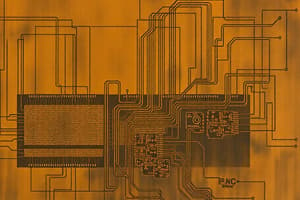Podcast
Questions and Answers
What can cause greater performance losses compared to data hazards?
What can cause greater performance losses compared to data hazards?
In the context of conditional branches, what does a taken branch refer to?
In the context of conditional branches, what does a taken branch refer to?
What method is commonly used to cope with branches in the context of pipeline stalls?
What method is commonly used to cope with branches in the context of pipeline stalls?
Which scheme is illustrated by the predicted-not-taken scheme?
Which scheme is illustrated by the predicted-not-taken scheme?
Signup and view all the answers
What is a one-cycle stall in a five-stage pipeline typically associated with?
What is a one-cycle stall in a five-stage pipeline typically associated with?
Signup and view all the answers
What is the performance loss range typically associated with a one-stall cycle per branch?
What is the performance loss range typically associated with a one-stall cycle per branch?
Signup and view all the answers
What happens when a branch is untaken in the predicted-not-taken scheme?
What happens when a branch is untaken in the predicted-not-taken scheme?
Signup and view all the answers
In the delayed branch scheme, what happens if the branch is taken?
In the delayed branch scheme, what happens if the branch is taken?
Signup and view all the answers
What is a characteristic of processors implementing the delayed branch scheme?
What is a characteristic of processors implementing the delayed branch scheme?
Signup and view all the answers
What is the purpose of having a branch delay slot in the delayed branch scheme?
What is the purpose of having a branch delay slot in the delayed branch scheme?
Signup and view all the answers
How was the delayed branch scheme utilized in early RISC processors?
How was the delayed branch scheme utilized in early RISC processors?
Signup and view all the answers
In the predicted-not-taken scheme, when is the target address known?
In the predicted-not-taken scheme, when is the target address known?
Signup and view all the answers
What is the primary purpose of branch prediction in pipelined processors?
What is the primary purpose of branch prediction in pipelined processors?
Signup and view all the answers
Which of the following statements about branch prediction is true?
Which of the following statements about branch prediction is true?
Signup and view all the answers
What is the primary advantage of a pipelined processor over a multiple clock cycle processor?
What is the primary advantage of a pipelined processor over a multiple clock cycle processor?
Signup and view all the answers
Which of the following techniques is commonly used in superscalar processors to address branch prediction?
Which of the following techniques is commonly used in superscalar processors to address branch prediction?
Signup and view all the answers
What is the purpose of branch delay slots in pipelined processors?
What is the purpose of branch delay slots in pipelined processors?
Signup and view all the answers
Which of the following statements about pipelined processors is true?
Which of the following statements about pipelined processors is true?
Signup and view all the answers
What is the purpose of the instruction fetch (IF) cycle?
What is the purpose of the instruction fetch (IF) cycle?
Signup and view all the answers
What is the purpose of the new program counter (NPC) register?
What is the purpose of the new program counter (NPC) register?
Signup and view all the answers
What is the purpose of the instruction register (IR)?
What is the purpose of the instruction register (IR)?
Signup and view all the answers
In which cycle is the PC register updated?
In which cycle is the PC register updated?
Signup and view all the answers
Which statement is true about the multiple-cycle implementation of MIPS instructions?
Which statement is true about the multiple-cycle implementation of MIPS instructions?
Signup and view all the answers
Which of the following is not one of the five clock cycles in the multiple-cycle implementation of MIPS instructions?
Which of the following is not one of the five clock cycles in the multiple-cycle implementation of MIPS instructions?
Signup and view all the answers
Explain the purpose of the new program counter (NPC) register in the multiple-cycle implementation of MIPS instructions.
Explain the purpose of the new program counter (NPC) register in the multiple-cycle implementation of MIPS instructions.
Signup and view all the answers
Describe the purpose of the branch delay slot in the delayed branch scheme used in early RISC processors.
Describe the purpose of the branch delay slot in the delayed branch scheme used in early RISC processors.
Signup and view all the answers
Explain how branch prediction is commonly used in superscalar processors to address branch hazards.
Explain how branch prediction is commonly used in superscalar processors to address branch hazards.
Signup and view all the answers
Discuss the primary advantage of a pipelined processor over a multiple clock cycle processor in terms of instruction-level parallelism.
Discuss the primary advantage of a pipelined processor over a multiple clock cycle processor in terms of instruction-level parallelism.
Signup and view all the answers
Explain the purpose of the instruction fetch (IF) cycle in the multiple-cycle implementation of MIPS instructions.
Explain the purpose of the instruction fetch (IF) cycle in the multiple-cycle implementation of MIPS instructions.
Signup and view all the answers
Describe the performance impact of a one-cycle stall per branch in a five-stage pipeline, and explain the typical range of performance losses associated with this type of stall.
Describe the performance impact of a one-cycle stall per branch in a five-stage pipeline, and explain the typical range of performance losses associated with this type of stall.
Signup and view all the answers
What are the potential consequences if the instruction in the branch delay slot of the delayed branch scheme is also a branch?
What are the potential consequences if the instruction in the branch delay slot of the delayed branch scheme is also a branch?
Signup and view all the answers
Explain the key difference between the predicted-not-taken scheme and the delayed branch scheme in terms of branch target address determination.
Explain the key difference between the predicted-not-taken scheme and the delayed branch scheme in terms of branch target address determination.
Signup and view all the answers
How does the delayed branch scheme address the performance impact of branches in a pipelined processor, and what are the potential drawbacks of this approach?
How does the delayed branch scheme address the performance impact of branches in a pipelined processor, and what are the potential drawbacks of this approach?
Signup and view all the answers
Contrast the branch target address determination process in the predicted-not-taken scheme and the delayed branch scheme, and discuss the implications of each approach on pipeline performance.
Contrast the branch target address determination process in the predicted-not-taken scheme and the delayed branch scheme, and discuss the implications of each approach on pipeline performance.
Signup and view all the answers
Explain how the delayed branch scheme addresses the performance impact of branches in a pipelined processor, and discuss the potential drawbacks of this approach compared to the predicted-not-taken scheme.
Explain how the delayed branch scheme addresses the performance impact of branches in a pipelined processor, and discuss the potential drawbacks of this approach compared to the predicted-not-taken scheme.
Signup and view all the answers
Analyze the trade-offs between the predicted-not-taken scheme and the delayed branch scheme in terms of their impact on pipeline performance, and discuss the potential consequences of a branch instruction appearing in the branch delay slot of the delayed branch scheme.
Analyze the trade-offs between the predicted-not-taken scheme and the delayed branch scheme in terms of their impact on pipeline performance, and discuss the potential consequences of a branch instruction appearing in the branch delay slot of the delayed branch scheme.
Signup and view all the answers
Explain how the predicted-not-taken scheme handles branch instructions in a pipelined processor, and what potential performance penalty is incurred if the branch is actually taken.
Explain how the predicted-not-taken scheme handles branch instructions in a pipelined processor, and what potential performance penalty is incurred if the branch is actually taken.
Signup and view all the answers
Describe the purpose and operation of branch delay slots in the delayed branch scheme, and how they were utilized in early RISC processors.
Describe the purpose and operation of branch delay slots in the delayed branch scheme, and how they were utilized in early RISC processors.
Signup and view all the answers
Explain the significance of control hazards in pipelined processors, and how they can cause greater performance losses compared to data hazards.
Explain the significance of control hazards in pipelined processors, and how they can cause greater performance losses compared to data hazards.
Signup and view all the answers
Discuss the trade-offs between the predicted-not-taken, predicted-taken, and delayed branch schemes in terms of their impact on performance, complexity, and branch prediction accuracy.
Discuss the trade-offs between the predicted-not-taken, predicted-taken, and delayed branch schemes in terms of their impact on performance, complexity, and branch prediction accuracy.
Signup and view all the answers
In the context of pipelined processors, explain the purpose and operation of the instruction fetch (IF) cycle, and how it relates to the other pipeline stages.
In the context of pipelined processors, explain the purpose and operation of the instruction fetch (IF) cycle, and how it relates to the other pipeline stages.
Signup and view all the answers
Describe the techniques used in superscalar processors to address branch prediction, and how they differ from the approaches used in scalar processors.
Describe the techniques used in superscalar processors to address branch prediction, and how they differ from the approaches used in scalar processors.
Signup and view all the answers
Explain the key tradeoff involved in the delayed branch technique and how compilers can optimize this approach.
Explain the key tradeoff involved in the delayed branch technique and how compilers can optimize this approach.
Signup and view all the answers
Describe the premise behind branch prediction and why it can improve performance when prediction hit rates are high.
Describe the premise behind branch prediction and why it can improve performance when prediction hit rates are high.
Signup and view all the answers
Compare and contrast the multiple clock cycle and pipelined implementations of processors, highlighting the key advantage of pipelining.
Compare and contrast the multiple clock cycle and pipelined implementations of processors, highlighting the key advantage of pipelining.
Signup and view all the answers
Explain how the predicted-not-taken scheme for branch prediction operates, including when the target address is known and what happens on a taken versus untaken branch.
Explain how the predicted-not-taken scheme for branch prediction operates, including when the target address is known and what happens on a taken versus untaken branch.
Signup and view all the answers
Describe a scenario where branch prediction hit rates may be low, potentially negating its performance benefits. Justify your answer.
Describe a scenario where branch prediction hit rates may be low, potentially negating its performance benefits. Justify your answer.
Signup and view all the answers
Elaborate on the statement: "These techniques are generally used in superscalar processors, which will be addressed in the later chapters." What additional capabilities might superscalar processors require to effectively utilize branch prediction and related techniques? Provide a specific example.
Elaborate on the statement: "These techniques are generally used in superscalar processors, which will be addressed in the later chapters." What additional capabilities might superscalar processors require to effectively utilize branch prediction and related techniques? Provide a specific example.
Signup and view all the answers
Study Notes
Branch Prediction Schemes
- When a branch is untaken, verified during the ID cycle, the scheme goes to the fetch and fall-through ordinarily.
- When a branch is taken, verified during ID, the fetch is redone at the branch target.
Predicted-Not-Taken Scheme
- Treats every branch as not taken.
- In a five-stage MIPS pipeline, the target address is not known earlier than the branch outcome (taken or untaken).
- This approach has no advantage in this pipeline.
Delayed Branch Scheme
- Heavily used in early RISC processors.
- Instructions in the delay slot are always executed.
- If the branch is untaken, execution continues with the instruction after the branch delay instruction.
- If the branch is taken, execution continues at the branch target.
Control Hazards
- Can cause greater performance losses compared to data hazards.
- Conditional branch execution may or may not change the program counter (PC) to a value other than its current value plus four (PC=PC+4).
- If a conditional branch changes the PC to the branch's target address, it is a taken branch; otherwise, it is an untaken branch.
Performance Loss
- One-cycle stall in a five-stage pipeline can result in a performance loss of around 10-30%.
Schemes to Cope with Branches
- Predicted-not-taken scheme
- Predicted-taken scheme
- Delayed branch scheme
- Branch prediction scheme to guess the outcome of the branch condition and proceeding as if the guessing were correct.
MIPS Simple Multiple-Cycle Implementation
- Every MIPS instruction can be implemented in at most five clock cycles: instruction fetch (IF), instruction decode/register fetch (ID), execution/effective address (EX), memory access/branch completion (MEM), and write-back (WB).
- Each functional unit can be used only once per instruction.
- Instructions must use functional units at the same stage like all other instructions, bringing considerable performance improvements.
Pipeline Processor
- Considered an enhancement of the multiple clock cycle processor.
- Each functional unit can be used only once per instruction.
- Instructions must use functional units at the same stage like all other instructions, bringing considerable performance improvements.
Studying That Suits You
Use AI to generate personalized quizzes and flashcards to suit your learning preferences.
Related Documents
Description
Learn about control hazards, hardware forwarding, and the impact of conditional branches on program counter (PC) in datapaths. Understand the difference between taken and untaken branches in control flow.




